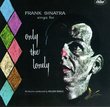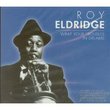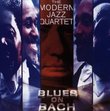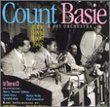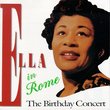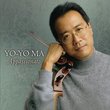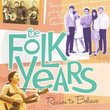| All Artists: Thelonious Monk Title: Criss Cross Members Wishing: 3 Total Copies: 0 Label: Sony Original Release Date: 1/1/1993 Re-Release Date: 4/6/1993 Genres: Jazz, Pop Styles: Modern Postbebop, Bebop Number of Discs: 1 SwapaCD Credits: 1 UPCs: 074644882322, 074644882346, 5099746918422, 766489540627 |
Search - Thelonious Monk :: Criss Cross
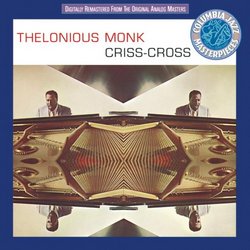 | Thelonious Monk Criss Cross Genres: Jazz, Pop
|
Larger Image |
CD DetailsSimilarly Requested CDs
|
CD ReviewsSingular Style From The Monk-"Key" Man Chris Matthews | Ridgecrest, CA | 11/21/2002 (5 out of 5 stars) "I had one of those moms that would play me cultured albums as a kid in between the usual children's records hoping that it would boost my intelligence and/or help me be a more free thinking person. Well, I don't know how well worked, but this was one of the albums that I remember really liking a lot, and I still have a tremendous fondness for it to this day. Nobody, and I mean NOBODY, plays piano like Thelonius. His wonderfully percussive and angular style eccentric manages to sound both primitive & sophisticated simultaneously. At times, he almost sounds as if he's beating his angular chords into the piano, and yet every one of them fits into melodies that are sometimes lush, sometimes zany, sometimes witty or urbane, and always, always smart. I think it's that "bonk" piano style on "Criss-Cross" that intrigued me as a child because here was a guy who played piano by smacking the keys & I could relate to that better than some of the other stuff mom put on. It was playful! He was having a good time while he improvised, and I could feel it even then. However, Monk is far from being a musical neonate. This is a sophisticated & likable album. Tunes such Hackensack", "Rhythm-A-Ning" & his fantabulous cover of "Tea For Two" are ear opening jams that show that melody, hooks & suspended chords can work together to create modern art that is intriguing, dancable & very memorable. Tenor sax & longtime Monk sideman Charlie Rouse remains the perfect accompanist for Thelonius. His wraps his lines around & between the piano's colors providing some articulate detail to the sketches. "Hackensack" is brilliant in this respect as is "Rhythm-A-Ning". Monk also lets him stretch out on "Eronel" for himself. But Monk is not all about playtime. "Crepescule With Nellie" is just beautiful & seems to come from a deep region of the heart I never knew existed. "Don't Blame Me" shows Monk's ability with phrasing lines with taste & elegance; a great contrast to "Criss Cross". This album still sets the child free in me. Not the victimized "inner child" of pop psychology, but the playful & happy future genius that once was. When Monk invents, I invent, and I hope other listeners will feel the same." The record I would be stranded on a desert island with! Ernest Boehm | Des Plaines, IL United States | 07/06/2000 (5 out of 5 stars) "This is my favorite Monk record which makes it my favorite record. This is the first Monk I ever owned and I consider my self lucky to have found it so early in life. Thelonius Monk may be the greatest of American composers and in my humble analysis is my favorite musical composer and preformer.Monk's music is so precussive yet melodic that it is hard not to see his influnce everywhere in jazz today. I love how in this recording drums and bass often play the melody while Monk plays rythum and precussion. often you will hear the melody once and than hear Monk play around it but never repeat it. Hackensack is a musical conversation between Charlie Rouse on Sax and Monk on piano. There is a long sax solo punctated by monks brilliant piano prucusion. Which is followed by a minimalist piano solo with not an unnecessary note. The sound is complex with the rest as important as notes. Monk uses dynamics and tempo as only a true master can. Tea for Two is the first monk song I loved it is the bass and drums starts the melody and then it cycles through to piano and sax. Monk plays melody and punctates phrase brilliantly. One of my all tie favorites. What is done with a simple melody by this quartet boggles the mind. The melody line is played twice in the song yet you hear it in your head as the band plays around it.Criss-Cross is just perfect this may be the best precussive playing of the piano ever. Charlie Rouse and monks inter play is unmatched. I think that Rouse and Monk really fed off each another this comes out in Monks accompaniment on the solos in this song. Eronel is all Charlie Rouse.Rhythm-A-Ning is a quick paced song with a lot of musical interplay. A lot of calls and answers. It shows how great monk can be in a suporting role and with a note or two add so much to a song. But don't forget the great solo by monk where while playing piano he plays the some of the best stride you have ever heard. Don't Blame Me is a solo piece and it shows monks great understanding of melody and phrasing. A real gem.Crepuscule With Nellie Is my favorite of all time this will be the first song that I dance on my wedding night. Pannonica Is a tribute to one of Monk's life long friends this is the best drums and bass on the recording Rouses best solo. Monks second best song. If you never listen to Monk start hear." A great cd from Monk's Columbia days. jazzfanmn | St Cloud, MN United States | 03/19/2001 (4 out of 5 stars) "Cut in a series of sessions from late 1962 through early 1963, this album features Monk backed by his longtime sideman Charlie Rouse on tenor and rhythm men Frank Dunlop on drums and John Ore on bass. The material is basically standard Monk. Heard hear are such Monk standards as "Hackensack", "Rhythm-A-Ning", and a superior Monk solo on "Crepuscule With Nellie". Overall the performances are exciting and energetic, the title track "Criss-Cross" stands out. This is fairly typical Monk from his Columbia years. He has long since established his personal style, but he still has a fresh imagination and produces fantastic performances throughout. Charlie Rouse is in top form as well. He was Monk's main hornman from the late 50's through most of the 60's. His extended stay within the realms of Monk's compositions and accompaniment pays off in a singular musical understanding between the two. He was such a part of Monk's group sound that a few of these tracks would sound odd with another hornman playing them. This is very nearly a great Monk album, and is recommended to all fans, or those new two his music."
|

 Track Listings (9) - Disc #1
Track Listings (9) - Disc #1